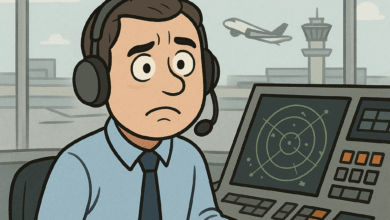How college grads can build a strong financial foundation

It’s no secret that the world is constantly evolving, and with the rapid advancement of technology, our daily lives are becoming more and more intertwined with the digital realm. From smartphones to smart homes, it seems like there’s always a new gadget or app that promises to make our lives easier and more efficient. But with this increased reliance on technology comes a whole new set of challenges and concerns.
One of the biggest concerns surrounding technology today is the issue of data privacy. With so much of our personal information stored online, from banking details to social media profiles, the risk of having that information stolen or misused is higher than ever. Cybersecurity threats are constantly evolving, and it can be difficult for the average person to stay one step ahead of hackers and cybercriminals.
Another major concern is the impact of technology on our mental health. With the rise of social media and constant connectivity, many people find themselves feeling overwhelmed and anxious from the pressure to always be online and available. The constant bombardment of notifications and messages can lead to feelings of FOMO (fear of missing out) and even depression.
Furthermore, technology has also had a significant impact on our physical health. With the rise of sedentary activities like binge-watching Netflix and playing video games, many people are leading increasingly inactive lifestyles. This lack of physical activity can lead to a host of health issues, including obesity, heart disease, and diabetes.
But it’s not all doom and gloom when it comes to technology. There are plenty of positive aspects to consider as well. For one, technology has made it easier than ever to stay connected with friends and family, no matter where they are in the world. Video calls, messaging apps, and social media platforms have made it simple to keep in touch with loved ones, even when you can’t be physically present.
Additionally, technology has revolutionized the way we work and communicate. The rise of remote work and digital communication tools has made it possible for people to collaborate and connect in ways that were previously unimaginable. This has opened up new opportunities for businesses and individuals alike, allowing for greater flexibility and efficiency in the workplace.
In conclusion, while technology certainly has its drawbacks, it’s clear that the benefits far outweigh the negatives. It’s important for individuals to be mindful of their technology usage and take steps to protect their privacy and mental health. By striking a balance between technology and real-life experiences, we can harness the power of technology to improve our lives without sacrificing our well-being. Over the past few decades, the world has witnessed a dramatic rise in technological advancements that have transformed the way we live, work, and communicate. One such advancement that has revolutionized the way we access information and connect with others is the internet. The internet has become an indispensable tool in our daily lives, allowing us to access a wealth of knowledge, communicate with people from all over the globe, and even conduct business transactions online.
With the rise of the internet, social media platforms have also become increasingly popular, providing users with a platform to share their thoughts, ideas, and experiences with others. Social media platforms such as Facebook, Twitter, Instagram, and LinkedIn have become integral parts of our daily lives, allowing us to stay connected with friends and family, network with professionals, and even promote our businesses.
One of the key benefits of social media is its ability to connect people from all walks of life and from all corners of the globe. Through social media, we can easily communicate with friends and family who may be thousands of miles away, share photos and videos of our daily lives, and even participate in online communities with like-minded individuals. Social media has truly made the world a smaller place, bringing people together in ways that were previously unimaginable.
Furthermore, social media has also become a powerful tool for businesses and marketers to reach their target audiences. With the ability to reach millions of users with just the click of a button, social media has become an essential marketing tool for businesses of all sizes. Companies can now easily promote their products and services to a global audience, engage with customers in real-time, and even track the success of their marketing campaigns through analytics provided by social media platforms.
However, as with any technological advancement, there are also drawbacks to social media. One of the biggest concerns surrounding social media is the issue of privacy. With the amount of personal information that users share on social media platforms, there is always the risk of that information falling into the wrong hands. Additionally, social media has also been criticized for its role in spreading misinformation and fake news, as well as for its potential to contribute to feelings of isolation and loneliness among users.
In conclusion, social media has undoubtedly had a profound impact on our society, changing the way we communicate, connect, and do business. While there are certainly concerns surrounding privacy and the spread of misinformation, the benefits of social media cannot be denied. As we continue to navigate the ever-changing landscape of social media, it is important for users to be mindful of the information they share online and to use these platforms responsibly. Ultimately, social media has the power to bring us closer together and to foster connections that transcend borders and boundaries. The impact of technology on modern society cannot be understated. From the way we communicate to the way we work, technology has transformed nearly every aspect of our lives. One area where technology has made a particularly significant impact is in the realm of education.
In the past, education was limited to traditional classroom settings, where students would sit at desks and listen to lectures from teachers. However, with the advent of technology, education has become more accessible and interactive than ever before. Online learning platforms, such as Coursera and Khan Academy, have made it possible for students to learn from anywhere in the world, at any time. This has opened up a world of opportunities for those who may not have access to traditional educational resources.
Technology has also revolutionized the way teachers teach. With the use of interactive whiteboards, tablets, and other digital tools, educators can create engaging and dynamic lessons that cater to the individual needs of each student. These tools have made learning more personalized and effective, leading to better outcomes for students.
Furthermore, technology has enabled students to collaborate with their peers in ways that were previously impossible. Online forums, video conferencing, and collaboration tools allow students to work together on projects and assignments, regardless of their physical location. This has fostered a sense of community and teamwork among students, helping them develop important social and communication skills.
In addition, technology has made education more inclusive and accessible for students with disabilities. Assistive technologies, such as screen readers and speech-to-text software, have made it possible for students with visual or hearing impairments to participate fully in the learning process. This has helped to level the playing field for all students, regardless of their abilities.
Despite all of the positive impacts of technology on education, there are some challenges that come with it as well. One of the biggest concerns is the digital divide, which refers to the gap between those who have access to technology and those who do not. In order to ensure that all students have equal opportunities to succeed, it is important for schools and policymakers to work towards bridging this gap.
Overall, the impact of technology on education has been overwhelmingly positive. It has made learning more accessible, personalized, and interactive than ever before. As technology continues to evolve, it will be exciting to see how it will further revolutionize the way we teach and learn. The sun was setting over the horizon, casting a warm golden glow over the rugged landscape. The air was filled with the sounds of birds chirping and the rustling of leaves in the gentle breeze. It was a peaceful evening in the wilderness, far away from the hustle and bustle of city life.
As I sat on a rock, taking in the beauty of my surroundings, I couldn’t help but feel a sense of awe and wonder at the natural world. The towering trees, the crystal-clear stream, the vibrant wildflowers – everything seemed to be in perfect harmony.
I had come to this remote wilderness area seeking solace and a break from the chaos of everyday life. And as I looked around me, I knew that I had found exactly what I was looking for. The tranquility of the wilderness enveloped me like a warm blanket, soothing my soul and calming my mind.
As I sat there, lost in my thoughts, I suddenly heard a rustling in the bushes. I turned my head to see a deer emerge from the undergrowth, its elegant form silhouetted against the fading light. It paused for a moment, its ears twitching as it surveyed its surroundings, before bounding off into the distance.
I watched the deer go, feeling grateful for the chance to witness such a beautiful creature in its natural habitat. It was moments like these that made me appreciate the wonders of the wilderness even more – the chance encounters with wildlife, the stunning landscapes, the sense of peace and serenity that enveloped me.
As the last rays of the sun dipped below the horizon, I knew it was time to head back to camp. But as I walked back through the wilderness, I carried with me the memories of this magical evening – memories that would stay with me long after I had left this peaceful oasis in the wilderness. There has been a lot of buzz surrounding the latest technology trends in the past year, and it seems like there are always new advancements being made. From artificial intelligence to virtual reality, the tech world is constantly evolving and changing the way we live our lives.
One of the most talked-about trends in technology right now is the rise of artificial intelligence (AI). AI is the development of computer systems that are able to perform tasks that normally require human intelligence, such as visual perception, speech recognition, decision-making, and language translation. This technology has the potential to revolutionize industries such as healthcare, finance, and transportation, and is already being used in a wide variety of applications.
Another trend that is gaining momentum is the use of virtual reality (VR) and augmented reality (AR) in various industries. VR and AR technology allow users to immerse themselves in a digital environment, either through a headset or a smartphone. This technology is being used in gaming, education, healthcare, and even in the military to train soldiers in realistic combat scenarios.
Blockchain technology is also making headlines, with the rise of cryptocurrencies such as Bitcoin and Ethereum. Blockchain is a decentralized and secure way of storing and transferring data, and has the potential to revolutionize the way we conduct financial transactions. It is also being used in supply chain management, voting systems, and even in the music industry to ensure that artists are fairly compensated for their work.
In addition to these trends, the Internet of Things (IoT) is also becoming increasingly popular. IoT refers to the network of physical objects that are connected to the internet, allowing them to communicate and exchange data. This technology is being used in smart homes, smart cities, and even in agriculture to monitor and control systems remotely.
Overall, the latest technology trends are shaping the way we live and work, and have the potential to revolutionize industries across the board. As these technologies continue to evolve, it will be interesting to see how they are integrated into our daily lives and what new advancements will be made in the future.





